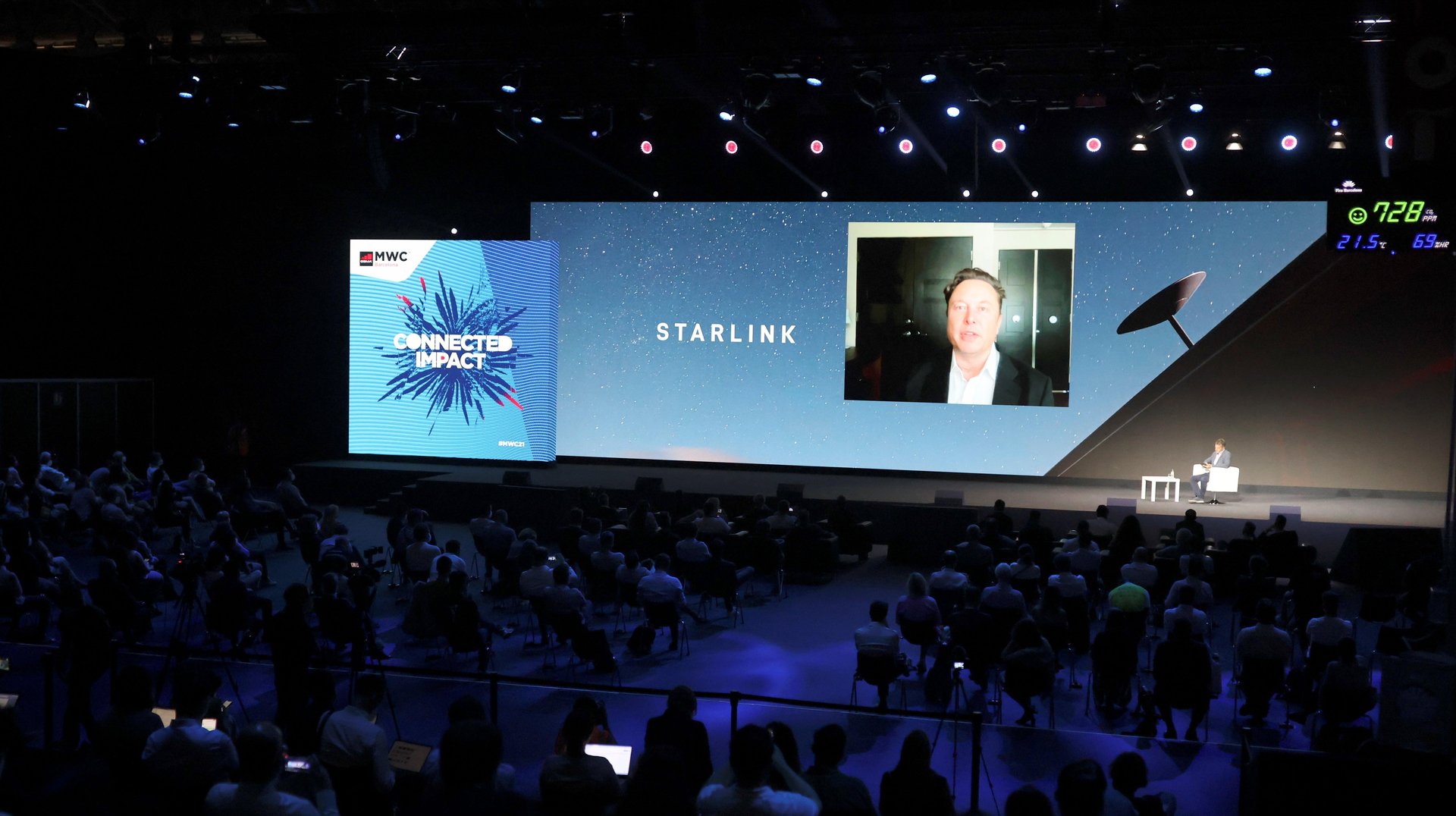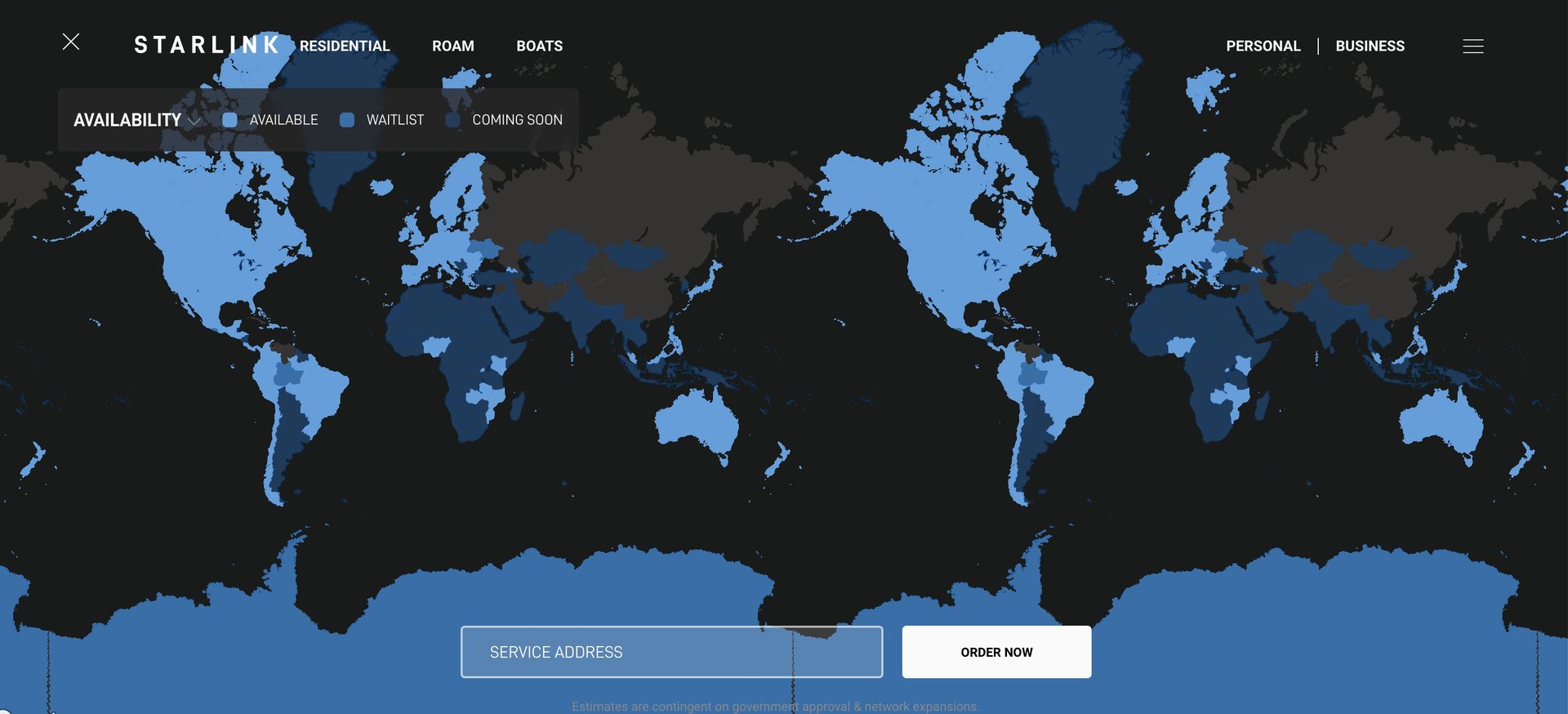Starlink traffic skyrocketed in Brazil this year—for better or for worse
Elon Musk's SpaceX's satellites have a monopoly in South American nations

SpaceX’s star satellite business is skyrocketing everywhere, and so are the threats it brings.
Suggested Reading
Starlink traffic more than tripled this year globally, according to an analysis of aggregate Cloudflare traffic volumes associated with the service’s autonomous system (AS14593) throughout 2023.
Related Content
After announcing plans to build broadband satellites in January 2015, SpaceX sent its first of the devices into orbit in 2019. Since then, SpaceX’s Starlink high-speed satellite internet service “has covered several regions that were previously unserved or underserved by traditional wired or wireless broadband,” connectivity company Cloudfare wrote in its annual internet trends report yesterday (Dec. 12). “In countries where Starlink turned up service in 2023, including Kenya, the Philippines, and Zambia, we saw traffic grow rapidly once the service became available.”
But Starlink traffic clocked the biggest growth—17.5 times over—in Brazil. For comparison, Starlink traffic increased about 2.5 times in the US.
SpaceX chief Elon Musk got approval to debut in Brazil from the previous Jair Bolsonaro administration. As of last month, Starlink has private customers in 697 out of 772 municipalities in the Legal Amazon—or 90% of them. But for all its service’s boons to Brazil, like bringing connectivity to schools and businesses, authorities are worried on several accounts, according to a November report by local publication Sumauma.
For one, locals—who were lagging in digital literacy compared to their global counterparts—could see their culture change quickly and without guardrails. The report also surfaces that illegal miners are exploiting the newfound connectivity to seed criminal operations; joined by drug traffickers, loggers, and more, the operatives send warnings about law enforcement raids and make remote payments.
In addition, Starlink’s monopoly concentrates sensitive user data in the hands of the company—along with its volatile leader Elon Musk. At one point, Musk reportedly blocked Ukraine’s connectivity at a crucial point in its war with Russia; Musk later chalked it up to Starlink’s terms and conditions, rather than personal motivations. The SpaceX chief also reportedly wields influence over the Gaza strip amid the Israel-Hamas war.
Snapshot: Availability map

Coming up: More competition in the Amazon for Starlink
Although Starlink is currently the undisputed leader in the space, competition will soon come knocking.
Amazon’ Project Kuiper, under development since 2018, secured the license to deploy and operate satellites from the US Federal Communications Commission (FCC) in July 2020. The service launched its first two test satellites this year. It has plans to deploy a constellation of 3,236 satellites and inaugurate the service by the end of next year.
In Brazil, Eutelsat OneWeb, which grew its satellite constellation in 2023, received operating authorization from federal agency Anatel in July.
SpaceX’s Starlink, by the digits
More than 5,000: Number of Starlink satellites in orbit, according to a letter the company wrote to the FAA this fall. That’s more than half of satellites in space today
42,000: How many satellites SpaceX hopes to have in the Starlink megaconstellation by the end of next year
342 miles: How far above the earth’s surface the low Earth orbit (LEO) region is. It’s where Musk’s SpaceX is placing Starlink’s network of thousands of satellites to provide global, high-speed internet coverage
60+ : Countries on all seven continents Starlink is available in as of Sept. 24
2 million: Starlink subscriber count as of Sept. 24
$9 billion: SpaceX’s expected 2023 revenue, according to Bloomberg
$30 billion: Annual sales potential of satellite internet revenue annually for SpaceX by 2025, as predicted by Musk
$110: Monthly cost of Starlink’s service for US users. It’s almost the same in Brazil at 530 real ($106).
$599: Cost of standard hardware to support connectivity. The kit costs 2,650 real ($533) in Brazil.
One more thing: Starlink’s IPO
Starlink will spin off from SpaceX to launch its initial public offering (IPO) late next year, as reported last month. But after the report, Musk took to X (formerly Twitter) dismissed the report as“false.” Billionaire investor Ron Baron pegged the timeline for Starlink’s IPO to be around 2027—a prediction Musk has neither confirmed nor denied.
